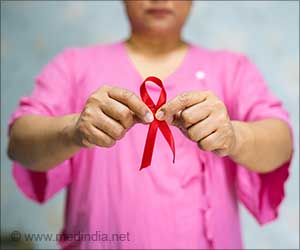As the tumour grows and the cancer cells get crowded, they start to break away from the tumour, change shape and are able to burrow through tissues.

‘There is still a debate as to whether non-coding RNA is just "noise" or whether it serves any function in the cell.’





In recent years it has become apparent that a lot of this non-coding DNA is actually transcribed into non-coding RNA. However, there is still a debate as to whether non-coding RNA is just "noise" or whether it serves any function in the cell. Part of the reason for this uncertainty is that it is very difficult to knock-out non-coding RNA without damaging the DNA, which can lead to off-target effects and false results. Now a team of scientists from Bath, Cambridge and the USA has identified a piece of non-coding RNA - transcribed from a stretch of DNA that doesn't code for a protein - that stops cells turning cancerous. The researchers hope their discovery, published in Nature Communications, will help develop new treatments for cancer.
Dr Adele Murrell, from the University of Bath's Department of Biology & Biochemistry, led the study. She explained: "The number of cells in our body are balanced by the level at which cells replicate and replace the ones that die. Sometimes the switches that control this growth get stuck in the 'on' position, which can lead to cancer.
"As the tumour grows and the cancer cells get crowded, they start to break away from the tumour, change shape and are able to burrow through tissues to the bloodstream where they migrate to other parts of the body, which is how the cancer spreads. This process is called metastasis and requires a whole network of genes to regulate the transformation of cell shape and mobilisation.
"In our study we've identified that GNG12-AS1, a strand of non-coding RNA, prevents the growth switch getting stuck and suppresses metastasis. The specific genomic region where this non-coding RNA is located often gets damaged in breast cancer patients - this control is removed and the cancer cells spread."
Advertisement
The team were able to distinguish between these two mechanisms by using smaller interfering RNAs (siRNAs) to either specifically stop the non-coding RNA from being made, or to degrade the RNA immediately after it was made. Both approaches led to cells changing their shape and transforming into migratory cells. However, only the first approach affected DIRAS3 and the cell cycle.
Dr Kat Arney, science communication manager at Cancer Research UK, said: "Only a tiny fraction of our DNA contains actual genes, and we know that at least some of the bits in between - often dismissed as 'junk' - play important roles in controlling how genes get switched on and off at the right time and in the right place.
"Research like this is helping is to unpick the precise details about how these regions work, shedding light on their potential role in the development of cancer and pointing towards new approaches for tackling the disease."
Source-Eurekalert















